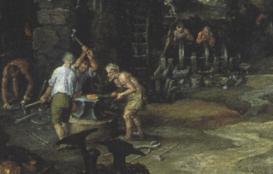This Working Group addressed the circulation of knowledge about materials between laboratories and artists’ workshops in the early modern period. In the fifteenth and sixteenth centuries the term laboratorium was used to designate a specific place of work of the alchemist. However, long before this there was considerable overlap between artists’ workshops and the spaces of work of the alchemist. An important component of alchemy was chemical technology, which was used in fields of art and craft to make pigments and artificial gemstones (among other products). The overlap between art and alchemy is one of materials, instruments, and apparatus, as well as of processes and experiments. This shared experience of tools and procedures did not exclude difference and contention. The Working Goup is no less interested in the processes of differentiation between art and alchemy than it is in their shared knowledge.
Among the topics that the Working Group encompassed are the organization and material culture of artists’ workshops and alchemical laboratories, the shared knowledge of materials and processes of attribution of meaning to materials in art and alchemy, and notions of imitation and transmutation in art and alchemy. The Working Group contributed to an epistemology of materials against a background of changing notions of "art" and "alchemy." In exploring the relationship between knowledge, technology, and the arts, the group dealt with all visual and especially decorative arts. This included not only painting and sculpture but also the so-called "arts of fire." Among the discussed arts and technologies were glassmaking, metallurgy, mining, sculpture, goldsmithing, the production of jewellery, majolica and porcelain, and painting technology.

